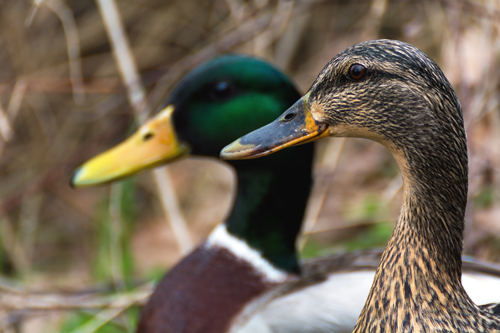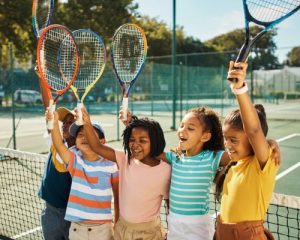
Please Don’t Feed the Ducks — It’s worse for them than you think
Even though the pleasure of a close encounter with wildlife is undeniable, feeding ducks and geese is very unhealthy for the animals and destructive to the environment.
Ocean Institute Naturalist and resident bird expert, Christopher Santomero says that, “While feeding ducks is an easy way to get up close and personal to our feathered friends, the food we usually toss them offers little-to-no nutritional value; it’s essentially junk food. They will fill up on the bread or chips you give them, instead of the more beneficial foods they eat in the wild like algae, worms, snails, fish, insects, seeds and nuts.” Animals experience the same effects from eating high-calorie, low-nutrient food that people can. They become obese, far more susceptible to illness and disease, and dependent on the unnatural food sources.
Having easily available food also discourages the geese and ducks from following their instincts and behaving naturally. Santomero says that “Reliance on your food means ducklings could never learn how to forage, migrations will be delayed, and birds will overcrowd areas, often resulting in the growth of bacteria and mold that pollutes the water and is harmful; not only to the birds, but to all community members of the ecosystem.” Ducks and geese travel between various habitats annually and regular sources of high-calorie food can cause them to miss the narrow seasonal windows they have for egg laying, incubating, hatching. Missing these migrations on a large scale could lead to significant population declines.
Excess and left-over food also attracts pests like rodents and insects and can cause unnatural algae and bacteria blooms in the water. If you have ever walked by a lake or pond and gotten a whiff of low tide, then you know how unpleasant these blooms can be. As the microorganisms in the water proliferate at a highly unnatural rate, they consume all of the oxygen in the water which can cause massive die-offs in fish and other animal populations. Rancho Santa Margarita Lake was once a popular fishing spot, but in 2015 an algae bloom just like this killed off all the fish and to date resource managers have not gotten it back to conditions that are safe for restocking.
While it’s impossible to say that a single feeding will significantly harm an animal or the ecosystem, families must remember that the cumulative impact of consistent and regular feeding is significantly destructive. Instead of feeding wildlife in our parks and waterways here are some more ecologically responsible ways to engage your kids with nature without having to trek into the wilderness:
Rather than giving animals food to eat, closely observing them eating in their natural environment and actively considering the similarities and differences between their behavior and how and what humans eat is a way to build the same personal bond with wildlife. Older kids can also be encouraged to collect their observations in a journal or field notebook. They can study the animals closely and record what they see in writing, pictures or even photographs. Having a challenge or mission to frame the child’s outdoor experience is a great way to occupy them, almost like a scavenger hunt: “how many different kinds of animals can we observe eating today.”
Santomero says, “Building a simple bird feeder and filling it with seed is another great way to get you and your family interacting with local birds in a healthy way.” Kids can build their own feeders, test out how different shapes and sizes attract more, less, or different birds, catalogue all of the species who come to the feeder, try and spot which animals eat different foods, and even participate in citizen science projects like Ebird and Project Feederwatch. If hand feeding animals is something that your child really wants to do, then the best option is to seek out opportunities to do it in a safe environment, supervised by professionals. One such opportunity can be found at the Ocean Institute in Dana Point, where guests can go on a behind-the-scenes tour that features their expert aquarists and the opportunity to hand feed real live sea stars.
Nothing beats close encounters with animals when it comes to connecting kids with the natural world, but it must be done in a way that is safe for the kids, safe for the animals, and helps make sure that the natural spaces we have left are available for generations to come!
By Nathan Taxel









Leave a Reply